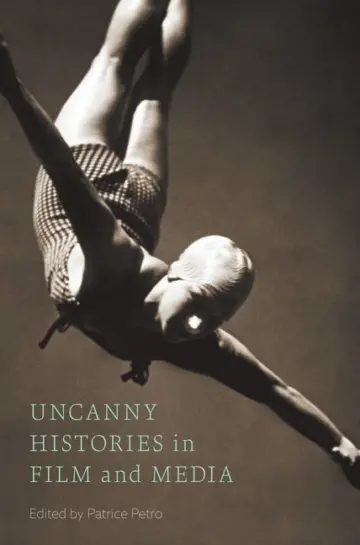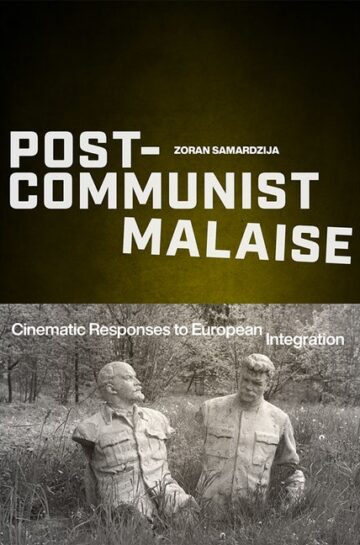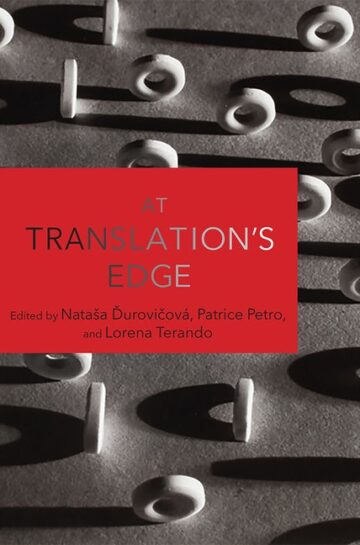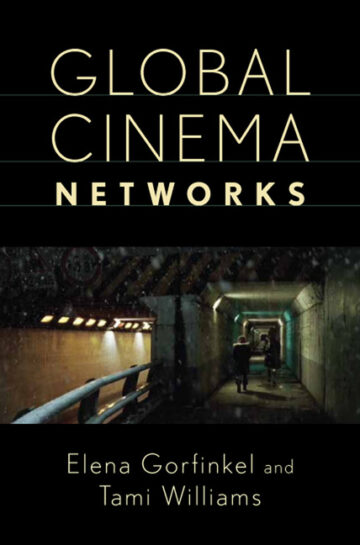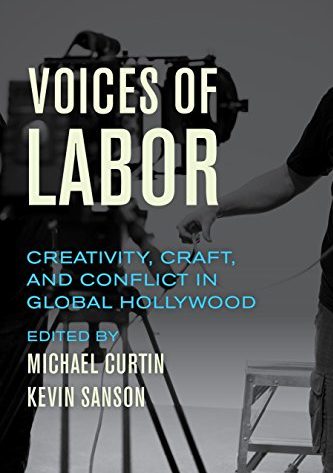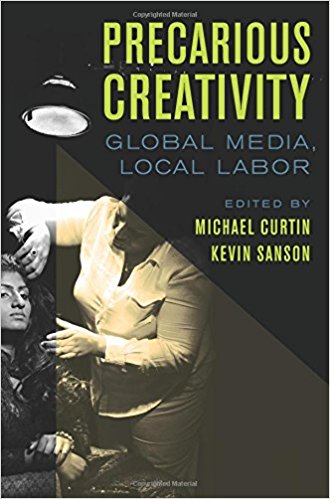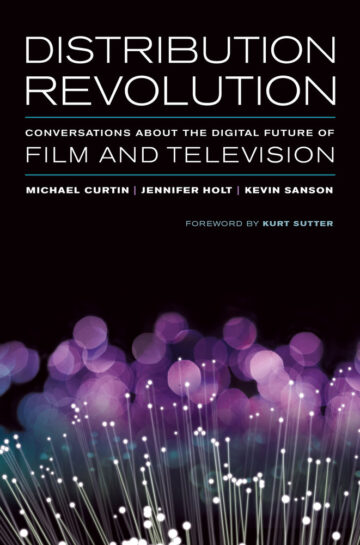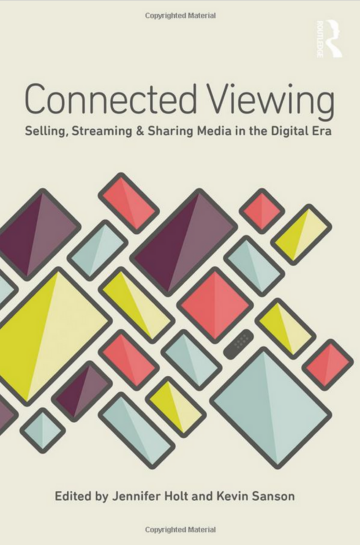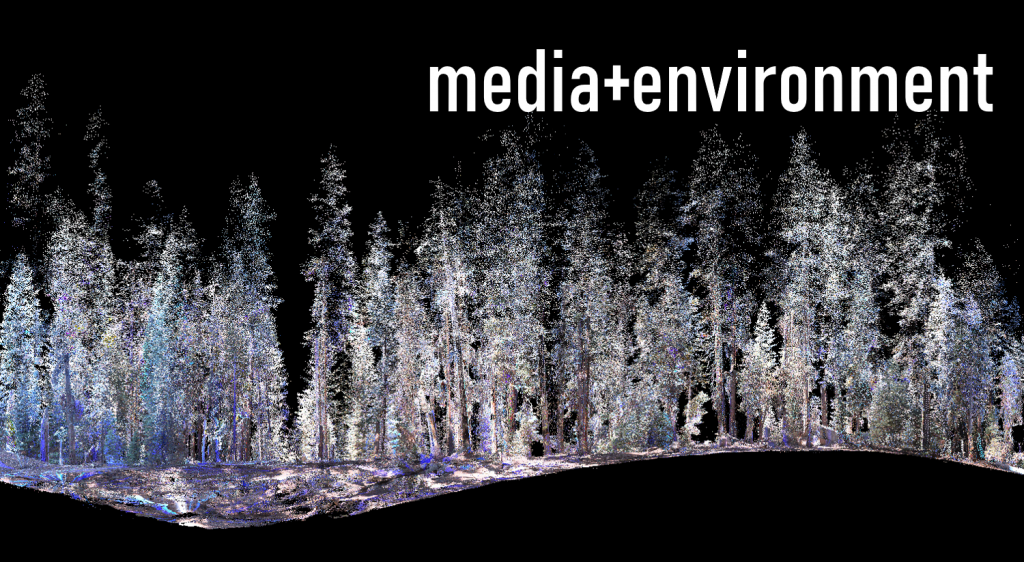The Carsey-Wolf Center sponsors a range of academic publications, both print and electronic, including a book series published by Rutgers University Press, a series of publications produced by the Center’s Media Industries Project, and the online journal Media+Environment.
Media Matters (Series Editors: Patrice Petro & Cristina Venegas)
Published by Rutgers University Press, Media Matters focuses on film, television, and media within a transnational and interdisciplinary frame: environmental media, media industries, media and democracy, information media and global media. It features the work of scholars who explore ever-expanding forms of media in art, everyday, and entertainment practices.
Monuments Askew: An Elliptical History of the Factory of the Eccentric Actor (2025)
Written by Maria Corrigan
Uncanny Histories in Film and Media (2022)
Edited by Patrice Petro
Contributions by Peter Bloom, Alenda Chang, Maria Corrigan, Naomi DeCelles, Hannah Goodwin, Priya Jaikumar, Masha Salazkina, Ellen C. Scott, Jasmine Nadua Trice, Cristina Venegas
At Translation’s Edge (2019)
Since the 1970s, the field of Translation Studies has entered into dialogue with an array of other disciplines, sustaining a close but contentious relationship with literary translation. At Translation’s Edge expands this interdisciplinary dialogue by taking up questions of translation across sub-fields and within disciplines, including film and media studies, comparative literature, history, and education among others. For the contributors to this volume, translation is understood in its most expansive, transdisciplinary sense: translation as exchange, migration, and mobility, including cross-cultural communication and media circulation. Whether exploring the Universal Declaration of Human Rights or silent film intertitles, this volume brings together the work of scholars aiming to address the edges of Translation Studies while engaging with major and minor languages, colonial and post-colonial studies, feminism and disability studies, and theories of globalization and empire.
Global Cinema Networks (2018)
Global Cinema Networks investigates the evolving aesthetic forms, technological and industrial conditions, and social impacts of cinema in the twenty-first century. The collection’s esteemed contributors excavate sites of global filmmaking in an era of digital reproduction and amidst new modes of circulation and aesthetic convergence, focusing primarily on recent films made across Europe, Africa, Latin America, Asia, and the Middle East. Moving beyond the digital as a harbinger of transformation, the volume offers new ways of thinking about cinema networks in a historical continuum, from “international” to “world” to “transnational” to “global” frames.
Sponsored by the CWC Media Industries Project
Voices of Labor: Creativity, Craft, and Conflict in Global Hollywood (2017)
Edited by Michael Curtin and Kevin Sanson, UC Berkeley Press.
Motion pictures are made, not mass produced, requiring a remarkable collection of skills, self-discipline, and sociality—all of which are sources of enormous pride among Hollywood’s craft and creative workers. The interviews collected here showcase the ingenuity, enthusiasm, and aesthetic pleasures that attract people to careers in the film and television industries. They also reflect critically on changes in the workplace brought about by corporate conglomeration and globalization. Rather than offer publicity-friendly anecdotes by marquee celebrities, Voices of Labor presents off-screen observations about the everyday realities of Global Hollywood. Ranging across job categories—from showrunner to make-up artist to location manager—this collection features voices of labor from Los Angeles, Atlanta, Prague, and Vancouver. Together they show how seemingly abstract concepts like conglomeration, financialization, and globalization are crucial tools for understanding contemporary Hollywood and for reflecting more generally on changes and challenges in the screen media workplace and our culture at large. Despite such formidable concerns, what nevertheless shines through is a commitment to craftwork and collaboration that provides the means to imagine and instigate future alternatives for screen media labor.
Precarious Creativity: Global Media, Local Labor (2016)
Edited by Michael Curtin and Kevin Sanson, UC Berkeley Press.
Precarious Creativity: Global Media, Local Labor examines the seismic changes confronting media workers in an age of globalization and corporate conglomeration. This pathbreaking anthology peeks behind the hype and supposed glamor of screen media industries to reveal the intensifying pressures and challenges confronting actors, editors, electricians, and others. The authors take on pressing conceptual and methodological issues while also providing insightful case studies of workplace dynamics regarding creativity, collaboration, exploitation, and cultural difference. Furthermore, it examines working conditions and organizing efforts on all six continents, offering broad-ranging and comprehensive analysis of contemporary screen media labor in such places as Lagos, Prague, Hollywood, and Hyderabad. The collection also examines labor conditions across a range of job categories that includes, for example, visual effects, production services, and adult entertainment. With contributions from such leading scholars as John Caldwell, Vicki Mayer, Herman Gray, and Tejaswini Ganti, this collection offers timely critiques of media globalization while also intervening in broader debates about labor, creativity, and precarity.
Precarious Creativity grew out of the Carsey-Wolf/Mellinchamp conference held in Spring 2014, which brought together an international group of scholars at UC Santa Barbara to examine the increasingly globalized and interconnected nature of screen media labor in a series of roundtable discussions and a keynote session featuring leading advocates from the VFX community in Southern California. The anthology is also the first to be offered through Luminos, the new open access publishing platform of University of California Press.
Distribution Revolution: Conversations about the Digital Future of Film and Television (2014)
Edited by Michael Curtin, Jennifer Holt, and Kevin Sanson, UC Berkeley Press.
Distribution Revolution is a collection of interviews with leading film and TV professionals concerning the many ways that digital delivery systems are transforming the entertainment business. These interviews provide lively insider accounts from studio executives, distribution professionals, and creative talent of the tumultuous transformation of film and TV in the digital era.
The first section features interviews with top executives at major Hollywood studios, providing a window into the big-picture concerns of media conglomerates with respect to changing business models, revenue streams, and audience behaviors. The second focuses on innovative enterprises that are providing path-breaking models for new modes of content creation, curation, and distribution—creatively meshing the strategies and practices of Hollywood and Silicon Valley. And the final section offers insights from creative talent whose professional practices, compensation, and everyday working conditions have been transformed over the past ten years. Taken together, these interviews demonstrate that virtually every aspect of the film and television businesses is being affected by the digital distribution revolution, a revolution that has likely just begun.
Connected Viewing: Selling, Streaming, and Sharing Media in the Digital Era (2014)
Edited by Jennifer Holt and Kevin Sanson, Routledge.
Connected Viewing brings together twelve original essays that critically engage with the socially-networked, multi-platform, and cloud-based world of today, examining the connected viewing phenomenon across television, film, video games, and social media. Research for the anthology originated as part of the Connected Viewing Initiative, a multi-year collaboration between the Carsey-Wolf Center’s Media Industries Project and Warner Bros. Home Entertainment. Collectively, the chapters offer a wide-ranging analysis of shifting business models, policy matters, technological infrastructure, new forms of user engagement, and other key trends affecting screen media in the digital era. Connected Viewing contextualizes the dramatic transformations taking place across both media industries and national contexts, and offers students and scholars alike a diverse set of methods and perspectives for studying this critical moment in media culture.
Media+Environment Journal
Founding Journal Editors: Alenda Chang, Janet Walker, and Ivan Ivakhiv
Media+Environment (2019 – )
Media+Environment is a journal of transnational and interdisciplinary ecomedia research, founded on the premise that media and environment is a crucial conjunction for our time. Peer-reviewed, open access, and published online by the University of California Press, the journal is the first both to center environmental media criticism and creative scholarship and to ensure that this vital work is widely and publicly accessible.

